The history of Isfahan carpets spans several centuries and is closely intertwined with the culture of this city. They are among Iran's most authentic carpets, reaching the height of their brilliance and fame during the Safavid era. The renowned Italian traveler Della Valle visited Isfahan twice, writing fascinating accounts in his travelogue about the exquisite wall paintings adorned with gold leaf in Isfahan. The presence of these golden wall paintings, especially in Isfahan's Ali Qapu Palace, likely inspired the creation of carpets woven with silk and golden threads during the reign of Shah Abbas. Under Shah Abbas's directive, numerous workshops were established in Isfahan and several other cities like Astara, Shirvan, Qara-Bagh, Kashan, Gilan, and Mashhad to produce carpets. Each workshop was instructed to weave carpets in their unique style to preserve the authentic and artistic qualities of the carpets.
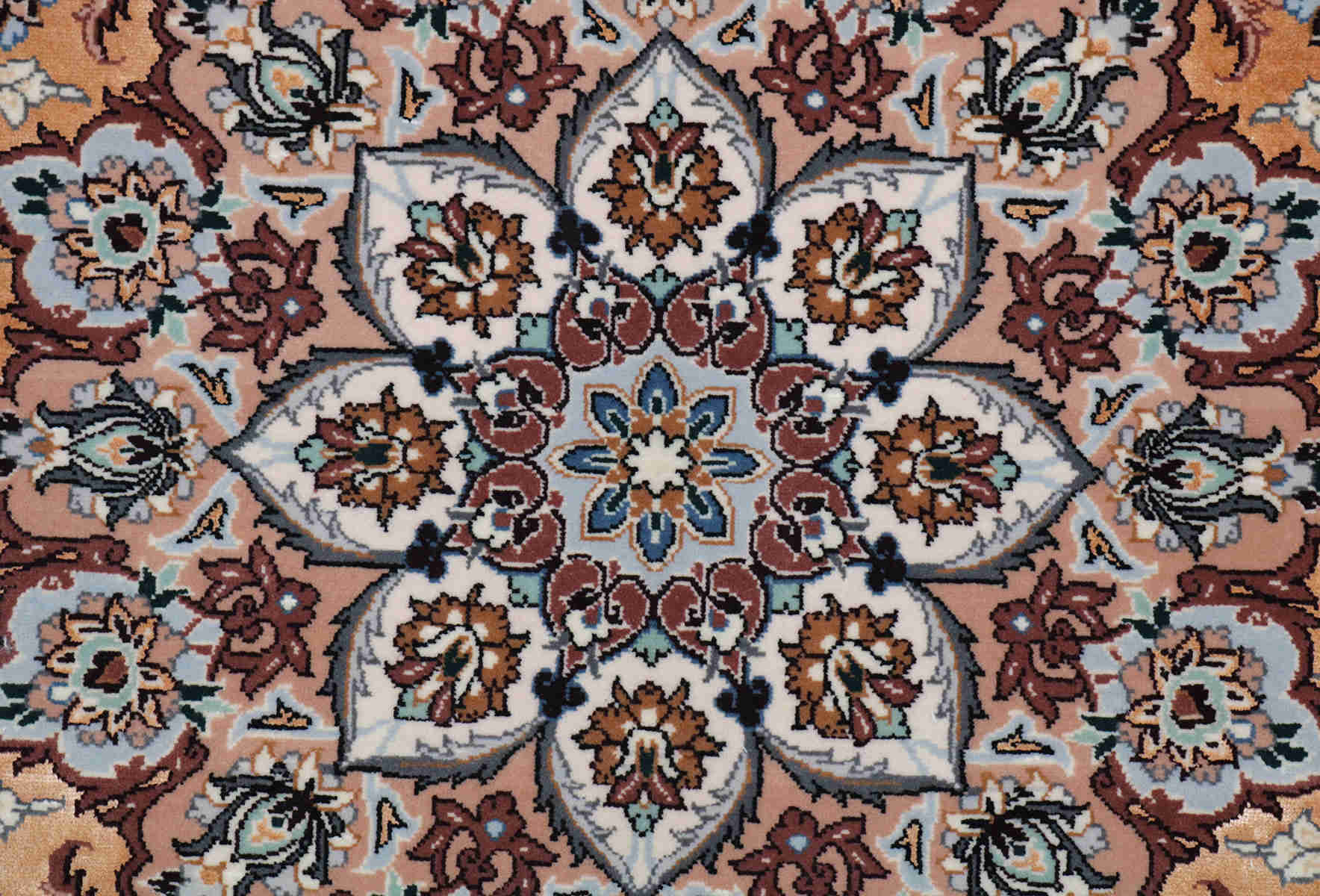
Support and attention from the Safavid shahs towards art and artists encouraged the establishment of large royal workshops, particularly for carpet weaving, attracting craftsmen from all classes and professions. Hence, this period is known as the era of splendor and grandeur in Persian carpets. The first carpet weaving workshops in Iran were established during the reign of Shah Abbas the Great in Isfahan. Isfahan has long been a center for designing beautiful and captivating patterns in various crafts, especially carpets. During the Safavid era, Persian nobles and kings exhibited a profound passion for the art of carpet weaving, leading to the creation of exquisite silk carpets. These dedicated artisans produced masterpieces that have left a lasting legacy. Notable locations in Isfahan, including the Haft Dast Palace, Aineh Khaneh, NamakDan, Chehel Sotoun, and Imam Mosque, were lavishly adorned with these luxurious silk carpets. Today, many of the valuable Persian carpets showcased in renowned museums across London, Paris, Europe, and America are original weavings from Isfahan.
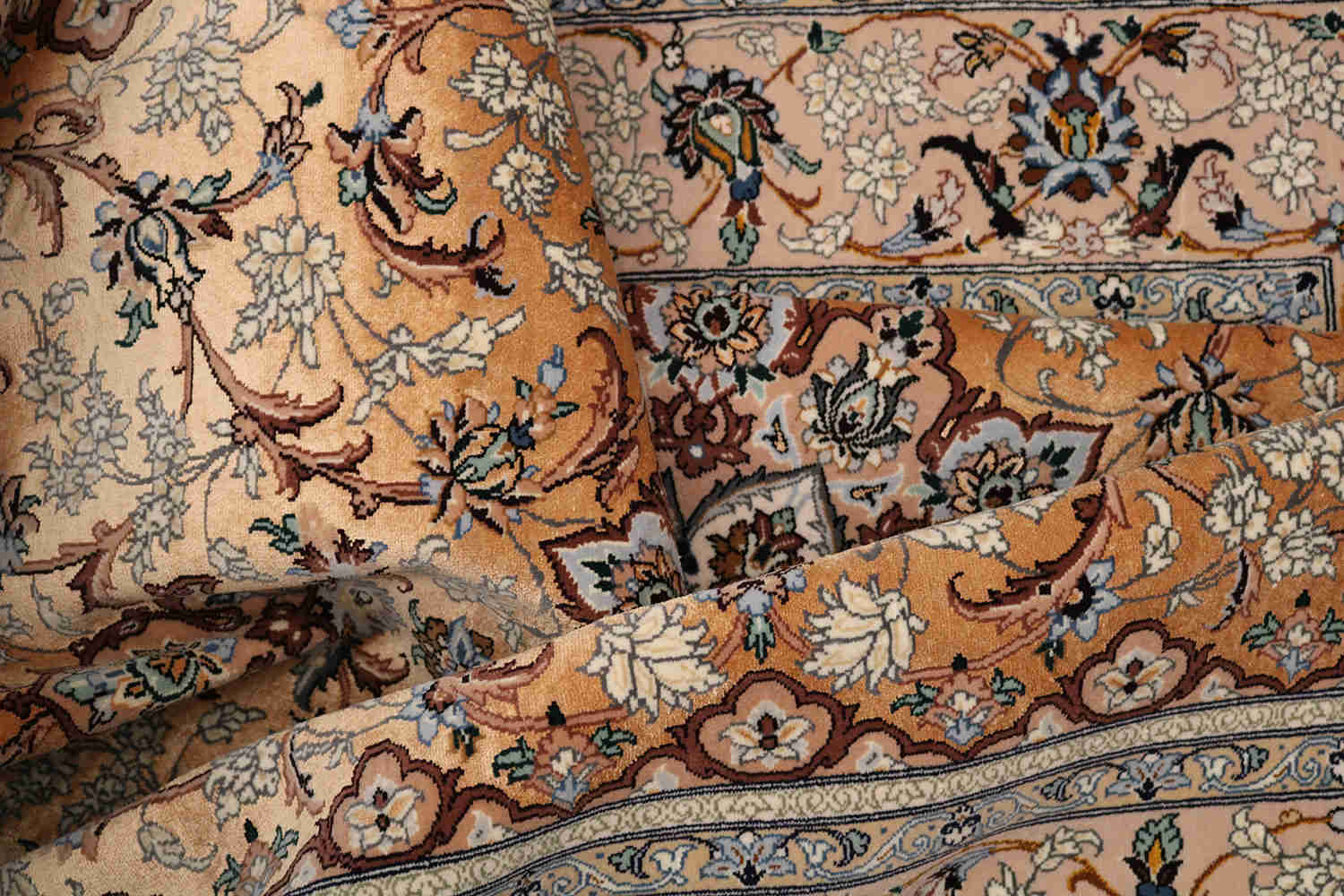
After the fall of the Safavid dynasty, the importance of this industry and other crafts gradually diminished. Over the past century, it has faced a complete decline, and carpet weaving has been nearly forgotten. By the end of Naser al-Din Shah Qajar's reign (the dynasty following the Safavids), there were no carpet-weaving workshops in Isfahan. During the Pahlavi era (the period following the Qajar dynasty), the carpet weaving industry in Isfahan came to a halt. However, in the 1970s, through extensive efforts, carpet weaving in Isfahan experienced a significant revival. During this period, artists and factory owners produced high-quality and beautiful carpets using new and modern designs. Since then, Isfahan rugs have gained recognition as one of the highest-quality and most renowned products in the global carpet industry. The prominence of Isfahan carpets has continually risen, attracting numerous admirers worldwide. The unique designs and intricate patterns of these carpets reflect the art, taste, and aesthetics of the people of Isfahan. It is no wonder that they are considered among the most authentic and exquisite carpets in the world.
Shah Abbasi: Iran's carpet and textile industries played a crucial role in Shah Abbas's (1587–1629) economic reform program, which sought to attract European merchants. The Shah Abbasi design, named after the Safavid king, emerged during this period of economic transformation. Under Shah Abbas's rule, carpet production and sales became a major industry and a key export for Iran. The Shah Abbasi carpet design became one of the most popular patterns of the time, with the Shah Abbasi flower motif, in particular, featuring prominently in the floral designs of many carpets from that era. Today, this distinctive motif continues to be a notable element in Iranian carpet designs. Notably, while this design symbolizes Shah Abbas and his dynasty, it also reflects the diversity of Iran’s regions through its various forms. In each city, the Shah Abbasi floral motif is intricately woven with subtle variations and unique artistic expressions. Generally, the Shah Abbasi flower is recognized for its decorative petals, which often resemble date palm leaves or feature designs such as the blue water lily or lotus.
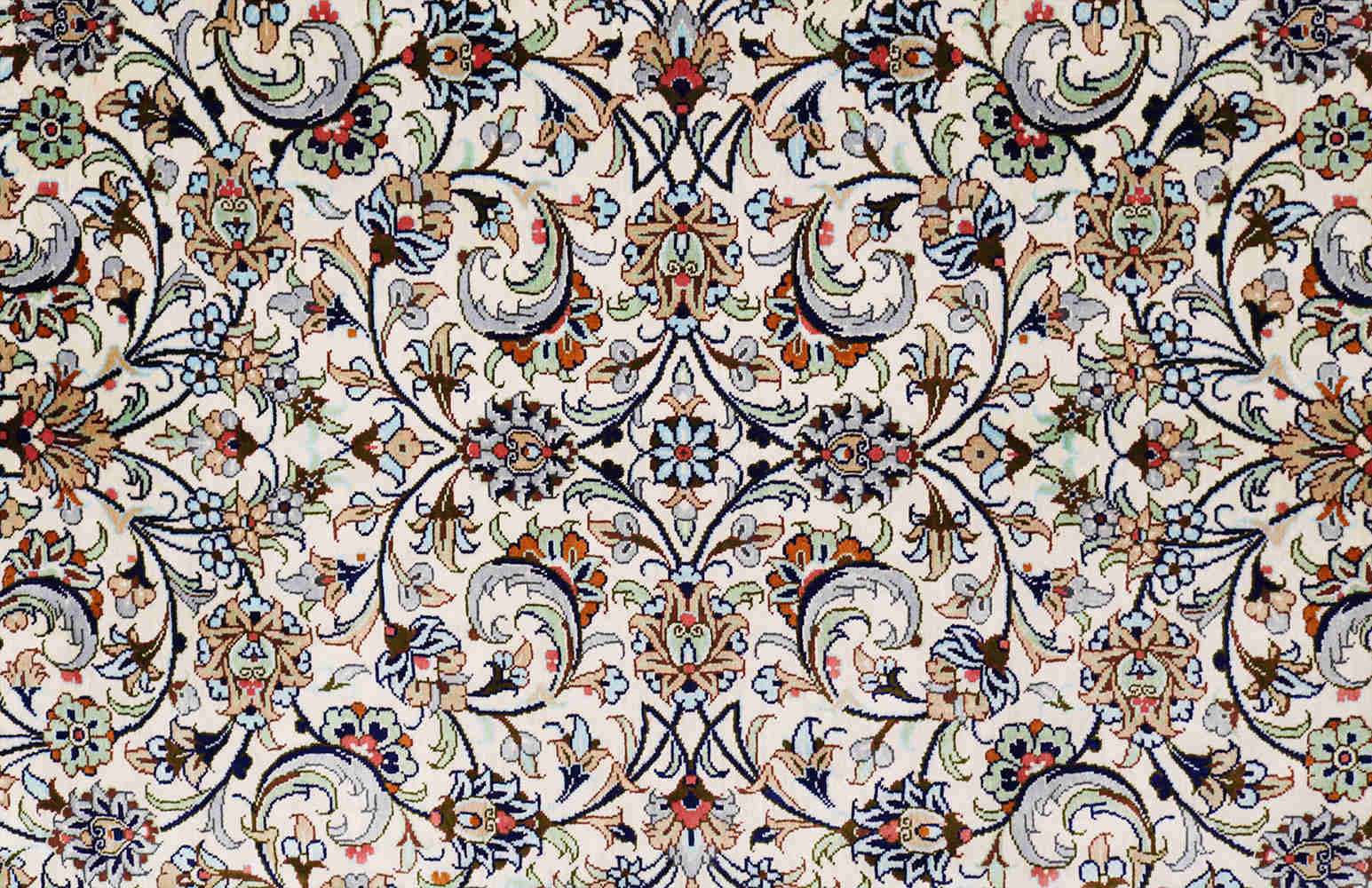
Eslimi: The Eslimi model, while rooted in antiquity, saw significant development and refinement during the Islamic era. This evolution reflects a sophisticated adaptation of its original form. The model can be seen as a mental representation of the Tree of Life, often depicted as a grapevine with sequentially arranged leaves growing from its base. The rods within and outside this design are integral to Islamic art, symbolizing an infinite process and representing eternity. In essence, it is known as a pattern resembling a plant with twisted stems. One of its distinguishing features is its indiscernible beginning and end. Islamic patterns and motifs are prominent in various forms of art, including paintings, inscriptions, carpets, and more, commonly referred to as Islamic designs and motifs. Among the most renowned of these is the Persian "Islimi Torpedo Mouth" pattern, also known as "Dahan Azhdari."
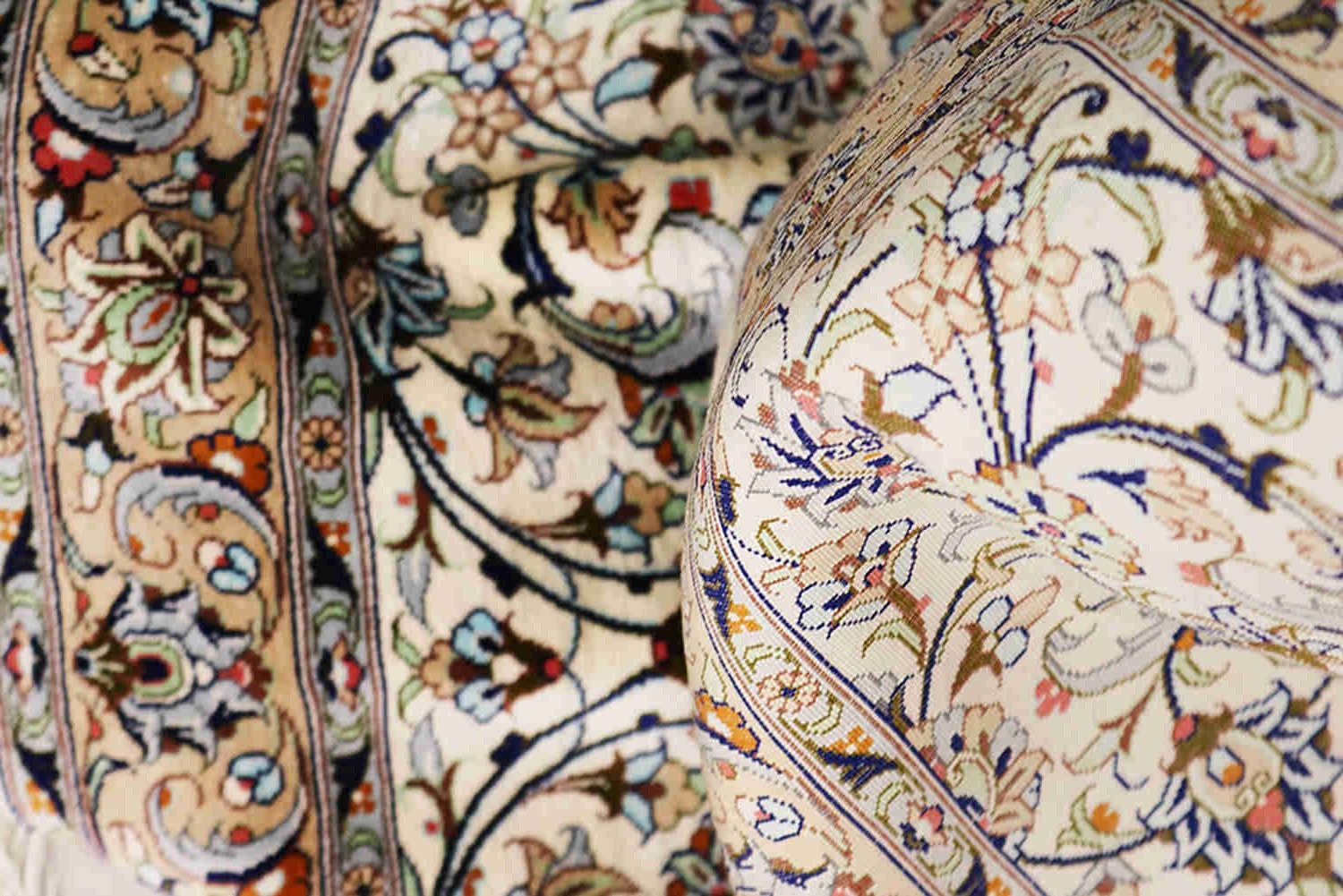
The primary structure of Isfahan carpet designs typically features exquisite Islamic and Khatai motifs, slimi framing, and beautiful Shah Abbasid floral patterns intricately woven into the carpet's texture. All the patterns of Isfahan are rotating, and there are almost no broken motifs. Designs like corner and medallion, tree motifs, mihrab patterns, vase designs, hunting scenes, and even Gol Farang, as well as repetitive borders, are among the patterns commonly used in Isfahan carpets. Among the distinctive visual characteristics of Isfahan carpets are the winding Khatai stems as the sub-pattern, complemented by slimi stems adorned with exquisite Shah Abbasid flowers. In the Isfahan rug, precise craftsmanship is evident in all components, including the weaving, borders and corners, medallions, and the Shah Abbasid floral pattern both in the main body and the borders.
Pay close attention to the knotting technique and knot density. Handmade Isfahan rug The density of their knots is usually high and utilizes the Persian knot (asymmetric knot), which reflects the skilled handwork involved in their creation. Colors in Isfahan rugs are typically vibrant and rich. The use of traditional (Cream, Brown, and Gray) dyes imparts distinctive hues that are characteristic of authentic Isfahan rugs. Check the color quality to ensure it aligns with traditional standards. Additionally, inspect the back of the rug. A genuine handmade Isfahan rug will have a clear impression of the pattern on the reverse side, which is indicative of its handcrafting process. By following these guidelines—checking the origin, materials, design, knotting technique, colors, back, edges, and price—you can confidently identify a genuine handmade Isfahan rug.
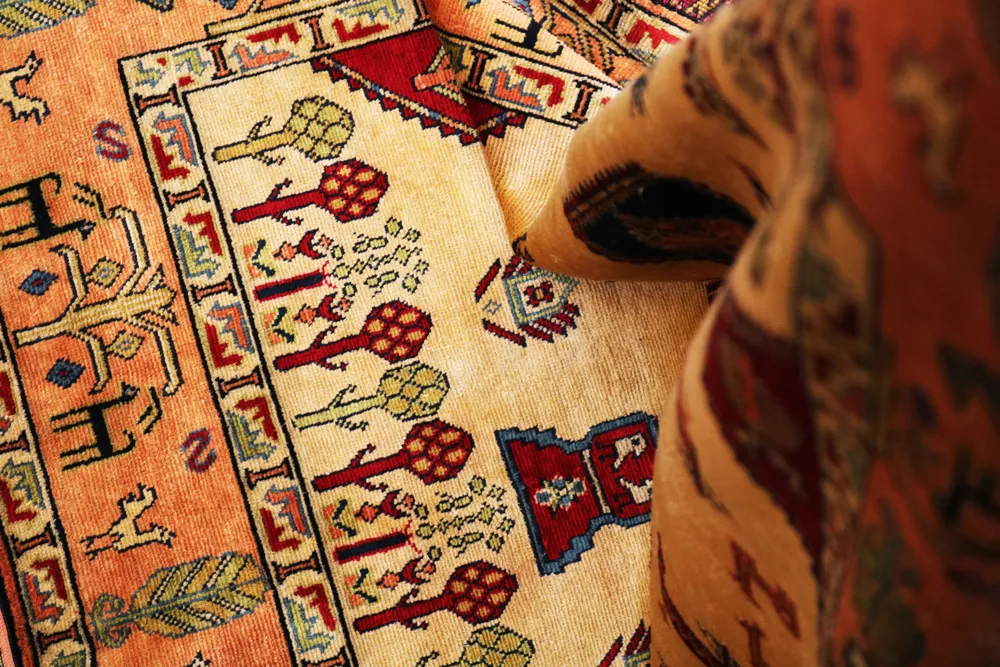
Isfahan silk carpets are among the most esteemed handicrafts, featuring intricate artistic designs that collectors and enthusiasts highly value for their beauty and prestige. These handmade silk carpets are synonymous with luxury, and while they command a higher price, they are celebrated for their superior quality and craftsmanship. The silk threads used in Isfahan carpets are among the finest in the carpet weaving and textile industries. These silk fibers are derived from spinning silk cocoons, which are produced by silkworms encasing themselves in a white filament. The value, quality, and beauty of Isfahan carpets are significantly enhanced by using silk threads. The inherent luster of silk fibers creates an unmatched brilliance in carpets, which is captivating and delightful to the observer.